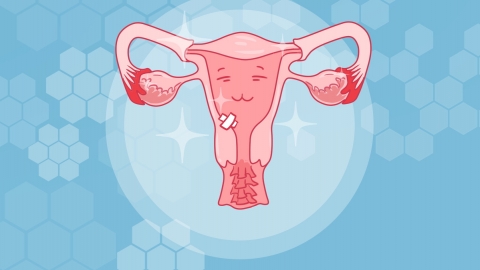What Are the Nine Causes of Abnormal Uterine Bleeding?
Generally speaking, there is no such statement as "nine causes of abnormal uterine bleeding." The main causes of abnormal uterine bleeding include ovulation bleeding, endocrine disorders, endometrial polyps, endometritis, submucosal uterine fibroids, etc. If discomfort symptoms occur, it is recommended to seek timely treatment at a regular hospital. Detailed analysis is as follows:
1. Ovulation Bleeding
During ovulation, a temporary drop in estrogen levels causes partial shedding of the endometrium due to lack of hormonal support, resulting in slight bleeding. Usually, no special treatment is required. It is important to maintain external genital hygiene, avoid strenuous exercise, and abstain from sexual activity during the bleeding period.
2. Endocrine Disorders
Factors such as long-term熬夜 (staying up late), and high mental stress can lead to endocrine disorders, causing an imbalance in estrogen and progesterone secretion. The endometrium is continuously stimulated by a single hormone, leading to irregular shedding and abnormal bleeding. Adjustments to sleep habits, ensuring sufficient sleep, and relieving mental stress are recommended. Under a doctor's guidance, estradiol valerate tablets, progesterone capsules, or dydrogesterone tablets may be used to regulate hormone levels.

3. Endometrial Polyps
Localized excessive growth of the endometrium forms polyps. The blood vessels on the surface of the polyps are fragile and prone to rupture and bleeding, leading to abnormal uterine bleeding. Small polyps can be monitored regularly. Larger polyps or those with obvious symptoms can undergo hysteroscopic endometrial polypectomy. After surgery, a levonorgestrel-releasing intrauterine system may be used under medical guidance to prevent recurrence.
4. Endometritis
Bacterial infection causes endometritis. The inflammation stimulates the endometrium to become congested, swollen, and brittle, making it prone to bleeding and causing abnormal uterine bleeding. Under medical guidance, cefuroxime axetil tablets, metronidazole tablets, or doxycycline hyclate tablets may be used to control inflammation and relieve bleeding symptoms.
5. Submucosal Uterine Fibroids
Fibroids growing into the uterine cavity protrude from the surface of the endometrium, affecting the normal shedding of the endometrium. Additionally, the rich blood vessels on the fibroid surface may rupture and cause bleeding. Under a doctor's guidance, mifepristone tablets, danazol capsules, or triptolide capsules may be used to shrink the fibroids. If the effect is unsatisfactory, hysteroscopic resection of submucosal uterine fibroids can be performed.
In daily life, attention should be paid to personal hygiene, frequent changing of underwear; maintaining regular sleep patterns and avoiding staying up late; eating a balanced diet and reducing intake of spicy and irritating foods; keeping emotionally stable and avoiding excessive anxiety. Regular gynecological examinations should be conducted to maintain uterine health.






